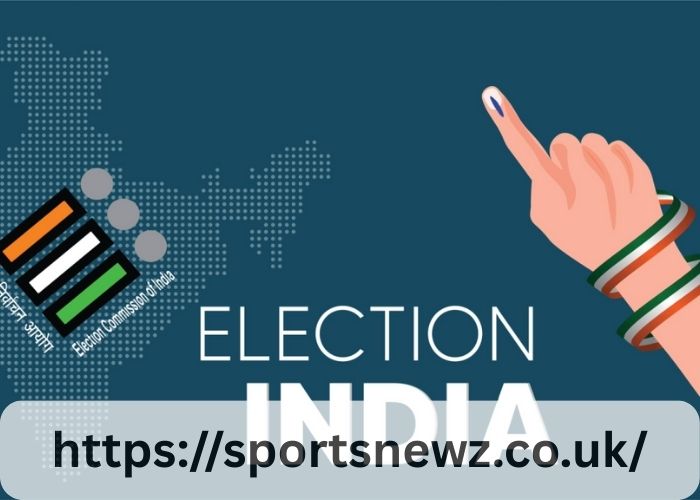On April 19th, India held elections for their parliament, known as the Lok Sabha. These polls took place over seven phases and votes cast will count toward final election results.
The BJP’s impressive showing at these elections reflects their popularity with voters and lasting support from them. Their manifesto emphasized bolstering middle class growth, creating top-quality educational institutes and building sustainable cities.
| Constituency | Candidate Name | Party Affiliation | Symbol | Gender |
|---|---|---|---|---|
| Sidhi | Kamleshwar Indrajit Kumar | Indian National Congress | Hand | Male |
| Sidhi | Dr. Rajesh Mishra | Bharatiya Janata Party | Lotus | Male |
| Sidhi | Pujan Ram Saket (Babbu) | Bahujan Samaj Party | Elephant | Male |
| Sidhi | Ajay Pratap Singh | Gondvana Gantantra Party | Saw | Male |
| Sidhi | Smt. Tara Devi Singh | Rashtriya Jansanchar Dal | Battery Torch | Female |
| New Delhi | Ku. Rinku | Bharatiya Janata Party | Lotus | Female |
| New Delhi | Dimple | Independent | Independent | Female |
| New Delhi | Jagdish Kumar | Independent | Independent | Male |
| Vellore | D.M. Kathir Anand | Dravida Munnetra Kazhagam | Rising Sun | Male |
| Vellore | A.C. Shanmugam | Bharatiya Janata Party | Lotus | Male |
Electoral process
India’s electoral process is an intricate democratic exercise that involves millions of voters and intricate voter mobilisation strategies. It is closely watched both nationally and internationally as its outcomes can have major ramifications for policy direction in one of the world’s most populous nations. Elections for Lok Sabha and state legislative assemblies are mandated under Indian Constitution which states they should occur every five years or they will be prematurely dissolved.
Elections in India are managed by the Election Commission of India (ECI), which determines polling dates before recruiting election agents to run day-to-day operations during campaign season. Furthermore, competing candidates affiliated with political parties receive special symbols that cannot be used by other parties; once nomination process complete, lists of candidates are published before campaign period has concluded and results announced by ECI.
The 2024 Lok Sabha elections saw an extraordinary voter turnout of 968 million voters – including an unprecedented turnout among women and people with disabilities. The rise of Congress party was evidenced by high voter participation rates; their resurgence demonstrated India’s commitment to democracy; while BJP won some seats but lost others due to this election process.
In the final days of campaigning, several candidates were arrested for breaking electoral law and engaging in illegal fundraising practices via social media platforms and spreading fake news. This incident underscores how serious electoral violations in India can be; and government has promised stronger measures against any violations they encounter.
BJP
India is a nation dedicated to democracy. Since 1950, when its sacred Constitution was adopted, civil rights, freedom, and equitable resource distribution have been protected under law. Yet with Congress party’s rise and voter turnout so high during these elections, perhaps India may be shifting away from BJP dominance.
At this election, over 968 million voters cast their votes to elect new representatives to India’s House of Representatives and Senate. Voting took place over seven phases from April 19 to June 1, with results being tabulated and completed counts being completed on June 5.
The BJP, which traditionally wins most seats in Uttar Pradesh as part of their Hindu nationalist agenda, was unable to maintain its lead and failed to achieve its target of a majority vote this time around. This resulted from its failure to cut into Congress votes or Akhilesh Yadav-led Samajwadi Party alliance votes and from internal blunders such as welcoming turncoats as candidates – failure that ultimately proved fatal for them this time around.
The BJP was also unable to dislodge control of Bihar from Jharkhand Mukti Morcha ally Jharkhand Mukti Morcha. Their performance there illustrates the rising importance of regional parties and coalition politics. Yet 2024 results differed significantly from prior elections as voters seemed better able to distinguish among state stakes at different levels of government, while at the same time the enduring presence of BJP-aligned strategic partnerships only reinforced its presence and power base further.
NDA
India held elections in 2024 to determine the majority party in its lower house of parliament, known as Lok Sabha (House of People). Nearly 968 million people cast votes during seven weeks-long polling campaigns which saw nearly 968 million cast ballots – the largest ever held anywhere. Although expected to win most seats, opposition parties gained ground due to voter turnout being higher than anticipated. The ruling party, the Bharatiya Janata Party (BJP), lost ground against an unexpected surge from competitors.
India is a democracy committed to free and fair elections. Its constitution guarantees its citizens their right to vote and freedom of expression, as evidenced by India’s rich democratic history characterized by civil rights protections and equality for all its people. India’s strong voter turnout during 2024 elections further highlights this commitment to democracy.
Indian politics is a complex affair, with state-based political parties and regional alliances dominating national affairs. The current strength of India’s governing BJP party can be traced to their alliance with Telugu Desam Party and Janata Dal (United), though this does not provide it with a majority in parliament; to remain stable the BJP requires significant assistance from its allies for maintaining stable rule.
Even in the face of rising opposition support, the BJP appears poised to maintain its hold over New Delhi and remain India’s central gravitational force. Its revival demonstrates public belief in Prime Minister Modi’s transformative vision and his lasting popularity.
India’s opposition has recently seen an unprecedented resurgence, underscoring its vibrant democracy. India’s constitutional structure allows multiple electoral alliances and diverse viewpoints to thrive within national polity, creating a dynamic political environment which is constantly shifting and changing – an impressive testament to India’s democratic strength that challenges any notions of single party rule.
Congress
India’s national elections are a key democratic exercise that are widely observed both domestically and internationally. Their results affect policy in areas ranging from social welfare programs to economic reforms. Per electoral rules, majority seats must be elected for formation of government. Once in power, whoever won those seats was appointed prime minister; from there he or she then selects his or her cabinet members. India also boasts an upper house known as Rajya Sabha which comprises representatives from states and union territories and deals primarily with financial matters.
India’s 2024 elections were its largest-ever, with 968 million eligible voters taking part over 44 days from April 19 to June 1. Votes were cast in seven phases over seven phases from April 19 until June 1, with the ruling BJP winning most seats but falling short of an absolute majority needed to form government without opposition support.
As part of their efforts to form a united front against the BJP, opposition parties created the INDIA alliance. While INDIA won some seats, its performance varied and it lost ground in states where it had previously been strong.
The Congress took advantage of seat-sharing arrangements with INDIA and saw gains in Rajasthan and Maharashtra as well as Kerala, where its candidate defeated Suresh Gopi of the BJP by over 74,000 votes in Thrissur. Over the coming months, Congress will focus on building momentum in these states to make sure its gains don’t reverse themselves.
Result
India has long demonstrated its dedication to democracy through its election process. This election cycle demonstrated this dedication by upholding democratic ideals such as those supporting women, Dalits, and tribal communities in politics. We saw new political alliances form and voting patterns emerge – all contributing new perspectives and priorities into national debates.
Voting was held for 543 seats in the Lok Sabha, India’s lower house of parliament. Elections also took place for Rajya Sabha – its upper chamber – as well as various state legislative assemblies and panchayats across India.
The BJP-led National Democratic Alliance won 293 seats out of 400 they targeted, setting the stage for Modi to return for his third term as prime minister. More seats may come through later rounds of voting.
To form the federal government, a coalition of parties must win a majority of Lok Sabha seats (543 out of 553) – this requires winning 272 out of 553.
The BJP and its allies won most seats in Phase 5 states that voted, although Congress made significant gains, particularly in Uttar Pradesh where several seats held by BJP were lost to opposition candidates; Faizabad is home to Ayodhya’s controversial Ram temple built upon the demolished Babri mosque; additional losses occurred elsewhere within Rajasthan, Madhya Pradesh, and Gujarat where their allies lost seats to other political groups.




